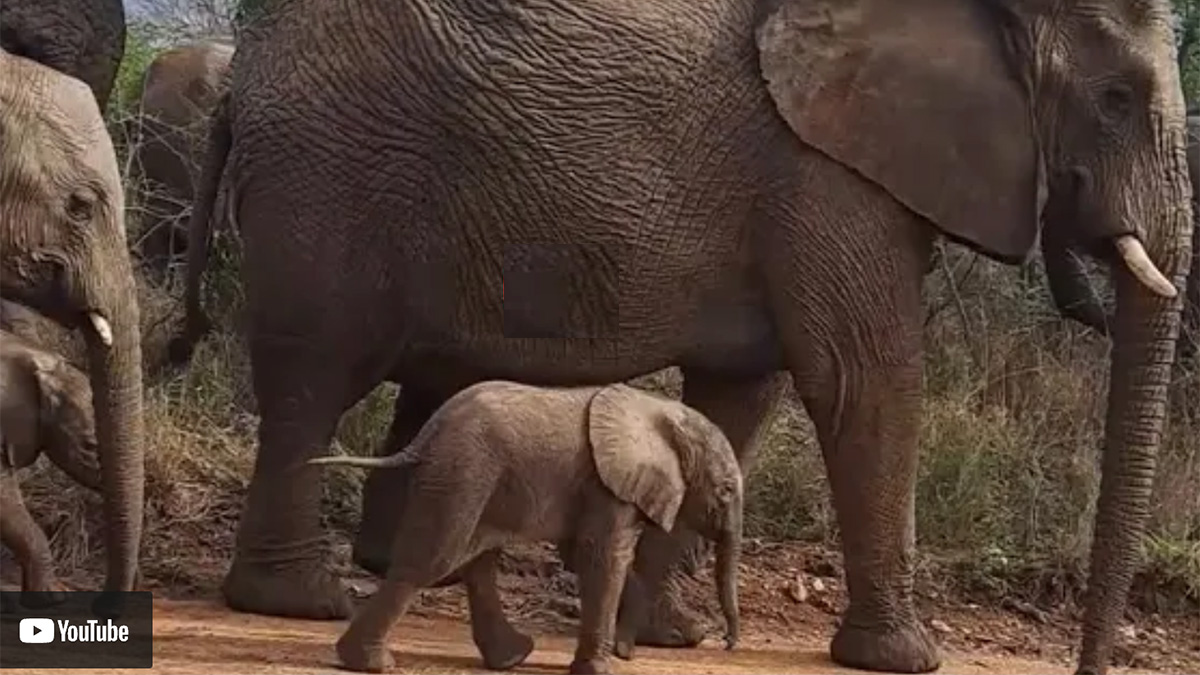
How do you determine an elephant’s age?
It’s possible to make an estimate of an elephant’s age from its physical size, but this varies between animals. Here’s how

It is possible to make a rough estimate of an elephant’s age from its physical size, but this varies between individuals.
The best way to do so is to ask the elephant to ‘open wide’ please!
THE MOST RELIABLE WAY TO AGE AN ELEPHANT IS BY LOOKING AT ITS TEETH
An elephant’s molars, necessary for grinding up plant material, are replaced six times during its lifetime.
These molars form at the back of the jaw, and move slowly forward and upward.
Each set is gradually worn down and replaced by the next set.
The replacement of these molars can be linked directly to age so, by identifying the molars in use, the age span of the elephant can be determined.
- Molar set 1 age 0 – 2 years
- Molar set 2 age 0 – 6 years
- Molar set 3 age 1 – 15 years
- Molar set 4 age 6 – 28 years
- Molar set 5 age 18 – 43 years
- Molar set 6 age 30 – 65 years
Once the sixth set has worn down, the animal is unable to chew food anymore and dies of starvation.
For more accurate calculations, scientists look at the exact position of the molars within the jaw.
They also examine the dentine and cement on the roots of the teeth.
New layers are laid down every year, so counting the number of layers on the molar can give a more precise age.
The Kruger National Park is home to several thousand elephants in South Africa. It also some 30 years ago boasted the ‘Magnificent Seven’.
Learn more about those elephant bulls HERE.
KRUGER NATIONAL PARK
The Kruger National Park covers an area of 19 623 km2 in the provinces of Limpopo and Mpumalanga and extends 360km from north to south and 65km from east to west.
To the west and south of the Kruger National Park are the provinces of Limpopo and Mpumalanga, respectively. To the north is Zimbabwe and to the east is Mozambique.
The administrative headquarters are in Skukuza.
It became South Africa’s first national park in 1926.
The park has nine main gates allowing entrance to the various camps.
They are: Crocodile Bridge, Kruger, Malelane, Numbi, Orpen, Pafuri, Phabeni, Phalaborwa and Punda Maria.
The Kruger National Park has 12 main rest camps
They are:
- Berg-en-Dal (with satellite Malelane)
- Crocodile Bridge
- Letaba
- Lower Sabie
- Mopani
- Olifants
- Orpen (with satellites Maroela and Tamboti)
- Pretoriuskop
- Punda Maria
- Satara (with satellite Balule)
- Shingwedzi
- Skukuza
All the main rest camps have electricity, a first-aid centre, a shop, braai and communal kitchen facilities, a laundromat/laundry tubs, a restaurant and/or self-service cafeteria, public telephones and a petrol station. Information centres manned by information staff are at Letaba, Skukuza and Berg-en-Dal.
The Kruger National Park has 4 satellite camps.
The Kruger National Park has 5 bushveld camps
Bushveld camps provide accommodation in smaller, more remote rest camps. One or more accommodation units may be reserved. Bush camps do not have shops or restaurants. Access to all bushveld camps is restricted to overnight visitors with reserved accommodation. Electrical equipment such as hair-dryers, cannot be used except at Talamati, Biyamiti and Bateleur. Open verandas often serve as kitchen/dining room. All units have a refrigerator, cooking utensils, crockery, cutlery and a stove, either a two-plate stove without an oven or a four-plate stove with an oven in the larger units. Al l units have private ablution facilities. Communal freezing facilities are offered at Biyamiti, Shimuwini, Talamati and Sirheni. Cellphones can be charged at reception at Shimuwini and Sirheni.
Kruger National Park Emergency Hotline: 013 7354325 or 013 7350197 or 076 8019679
ARE YOU A FREQUENT VISITOR TO THE KRUGER NATIONAL PARK? IF SO, WHICH IS YOUR FAVOURITE CAMP?
Let us know by emailing info@thesouthafrican.com or sending a WhatsApp to 060 011 021 1
ALSO READ: Prostate cancer cases expected to double over next 20 years
